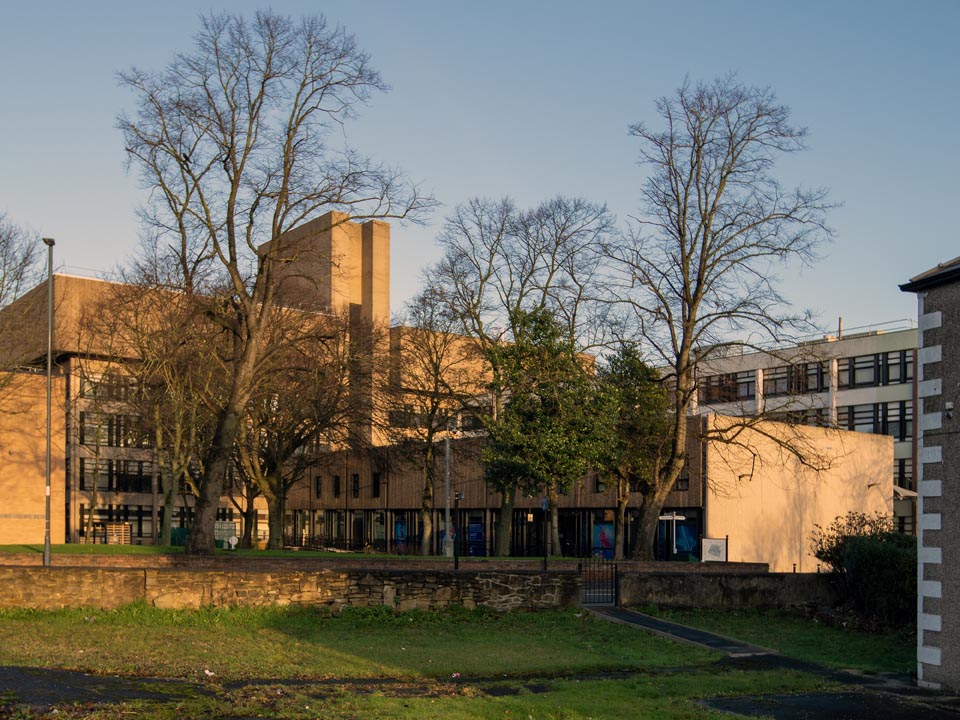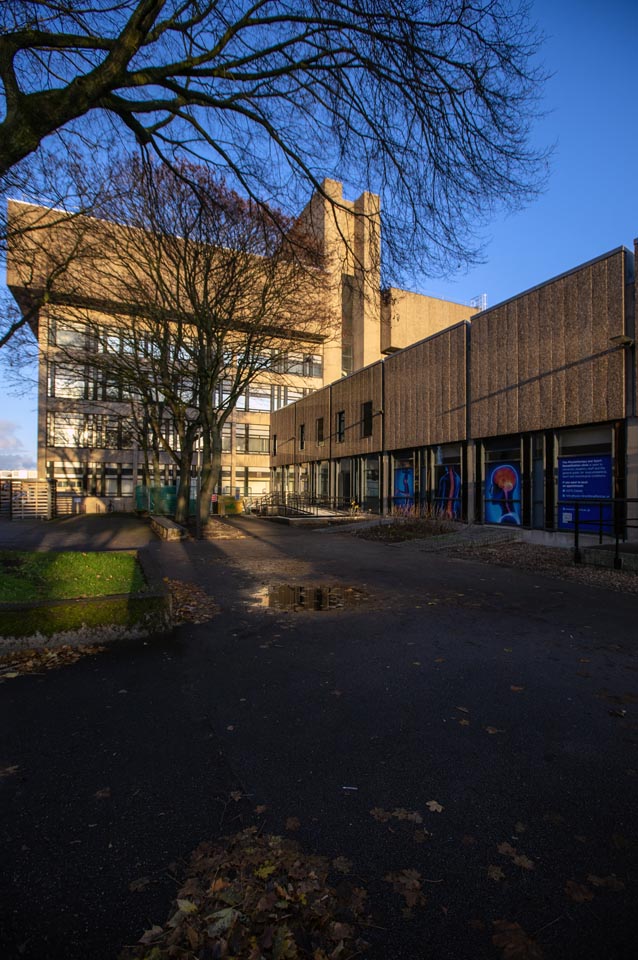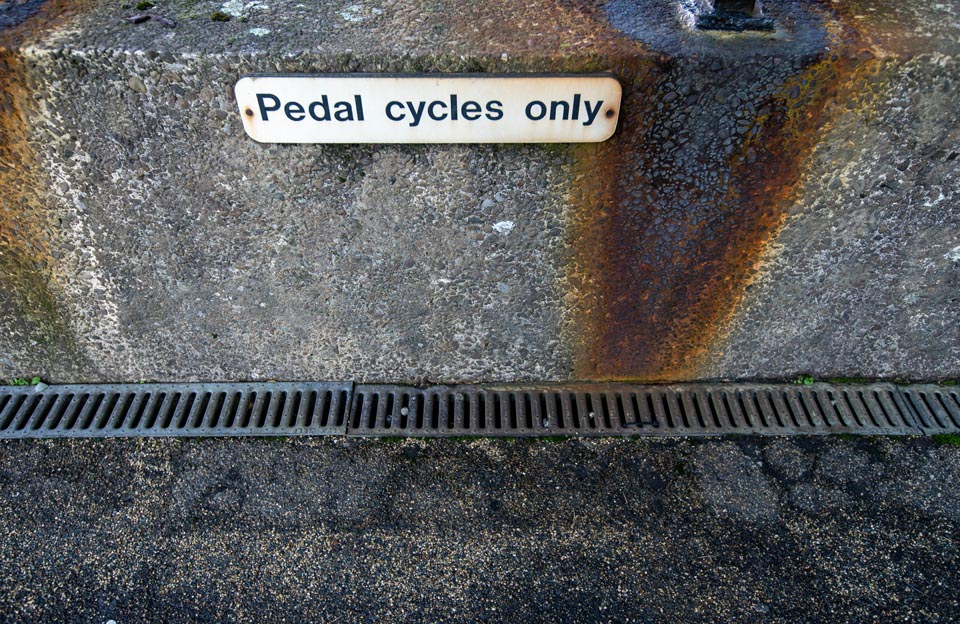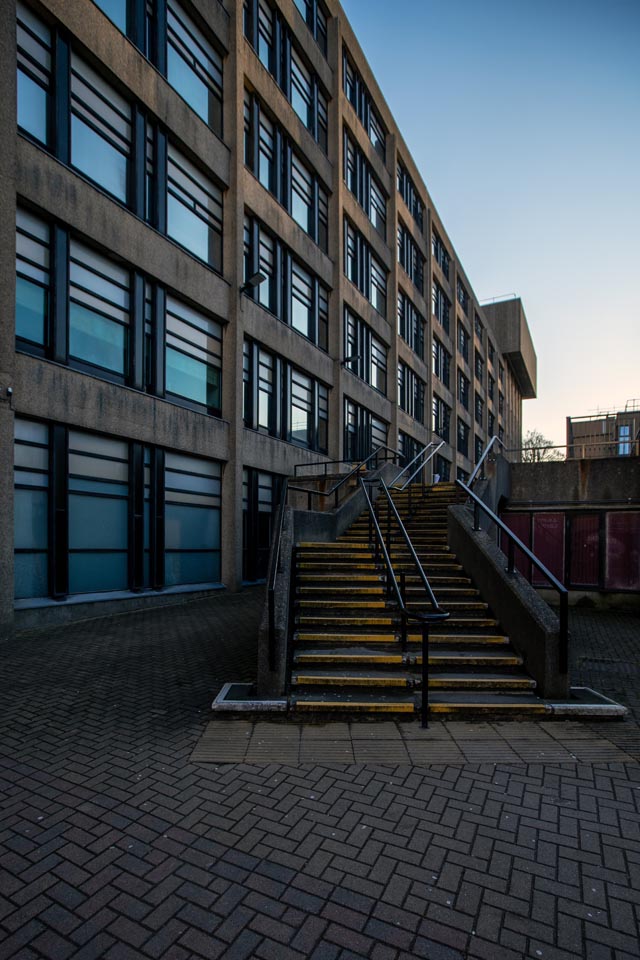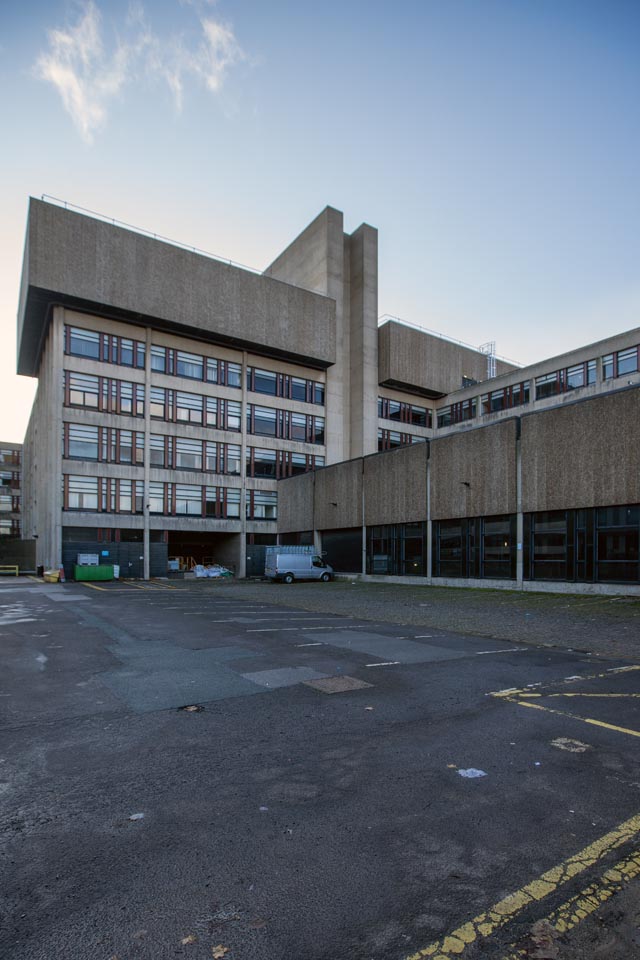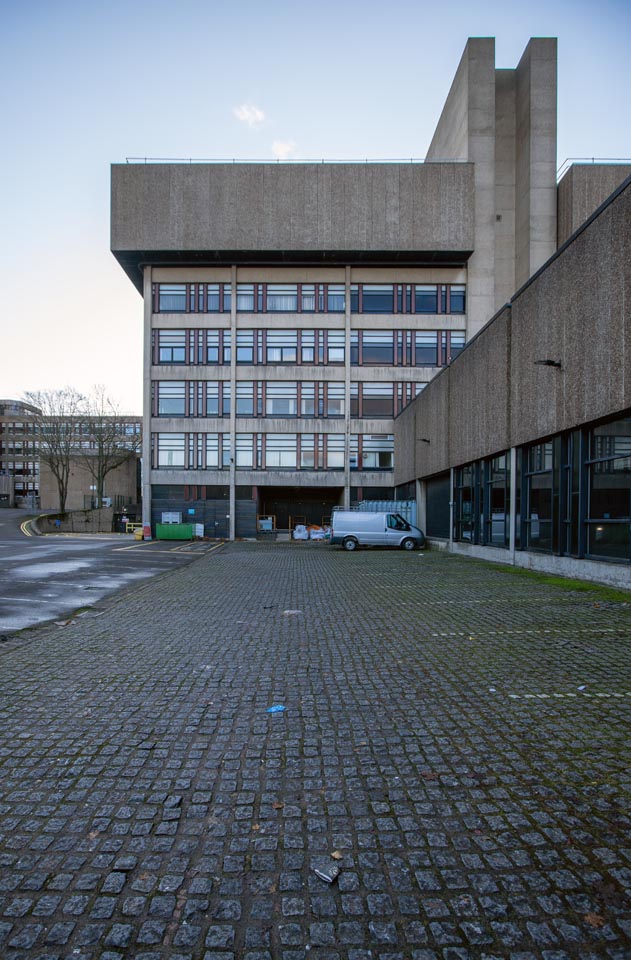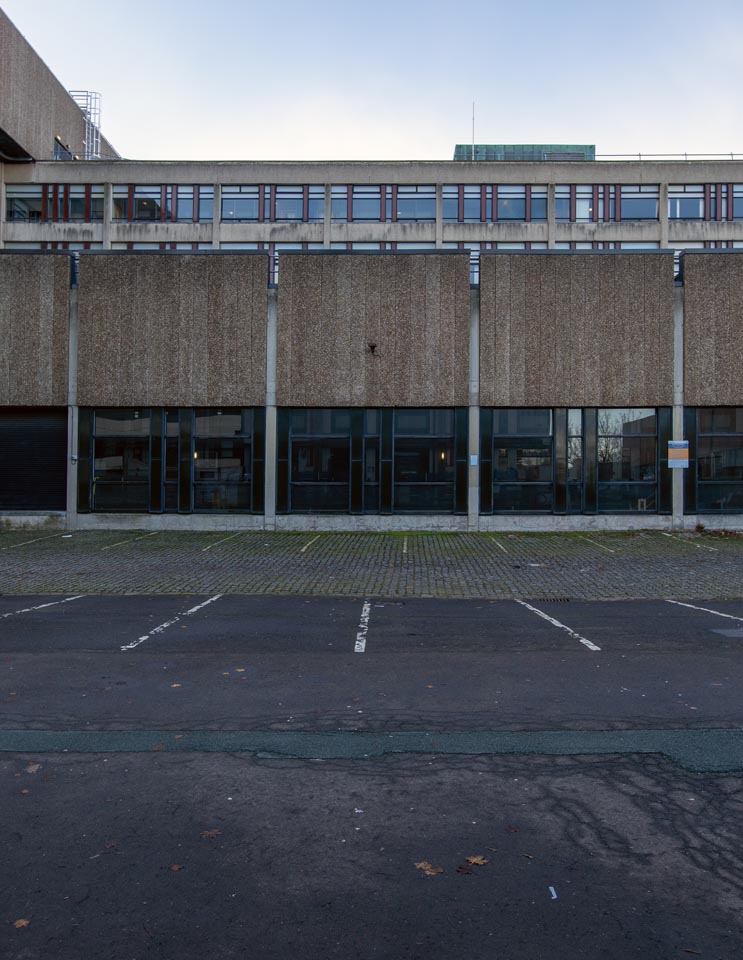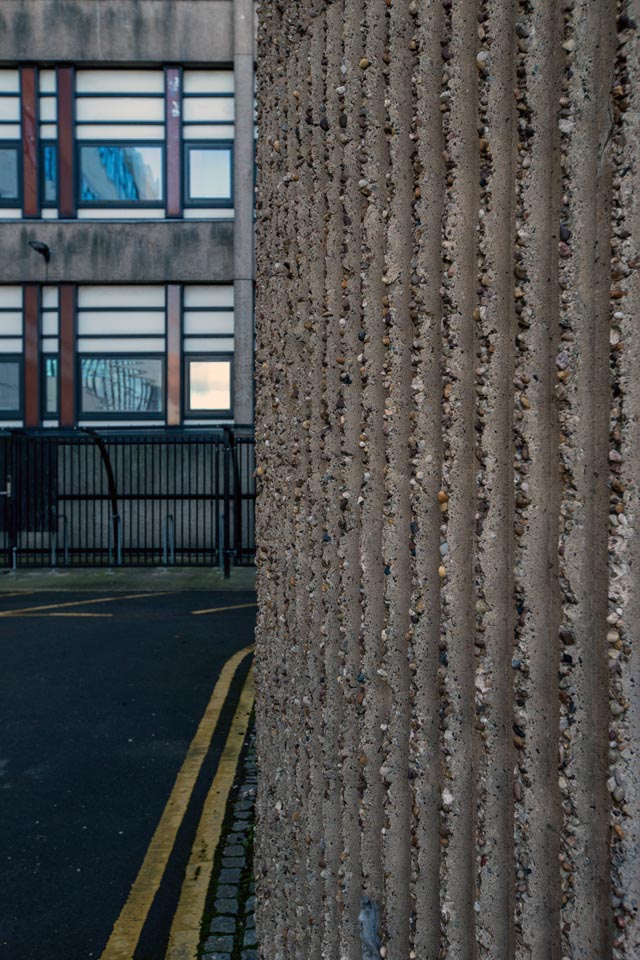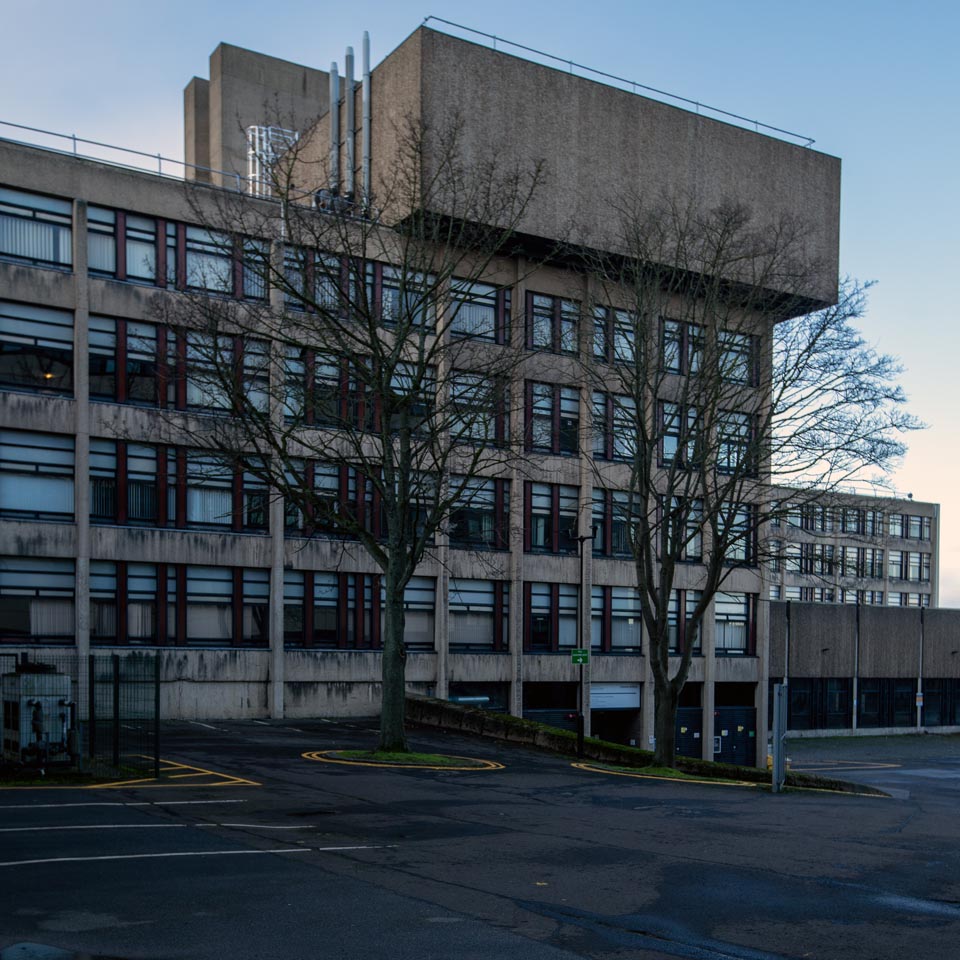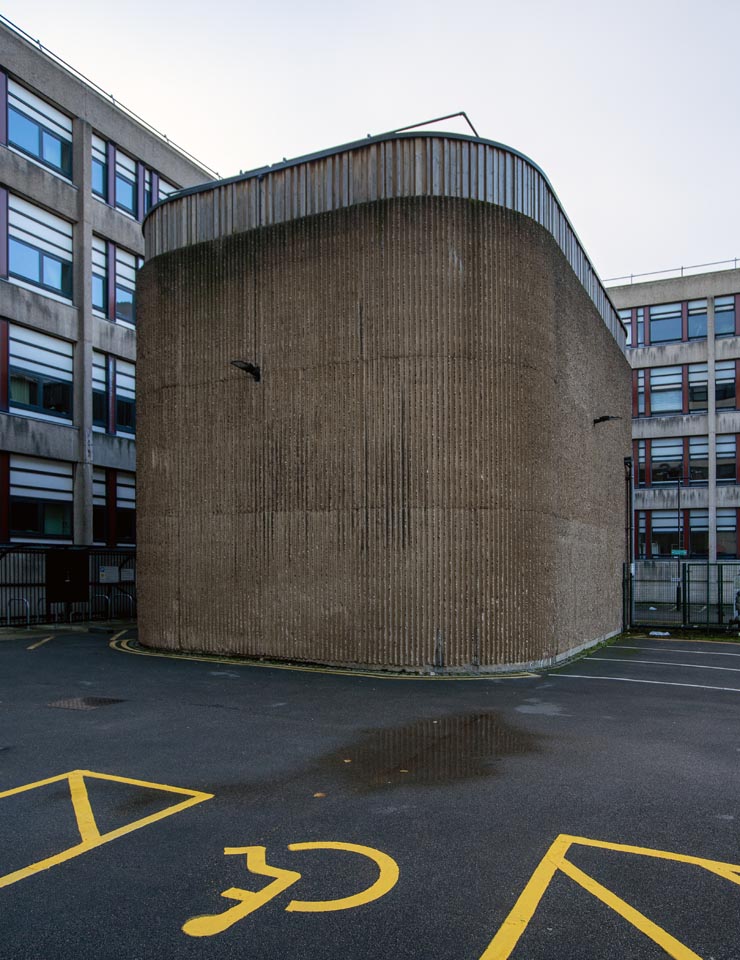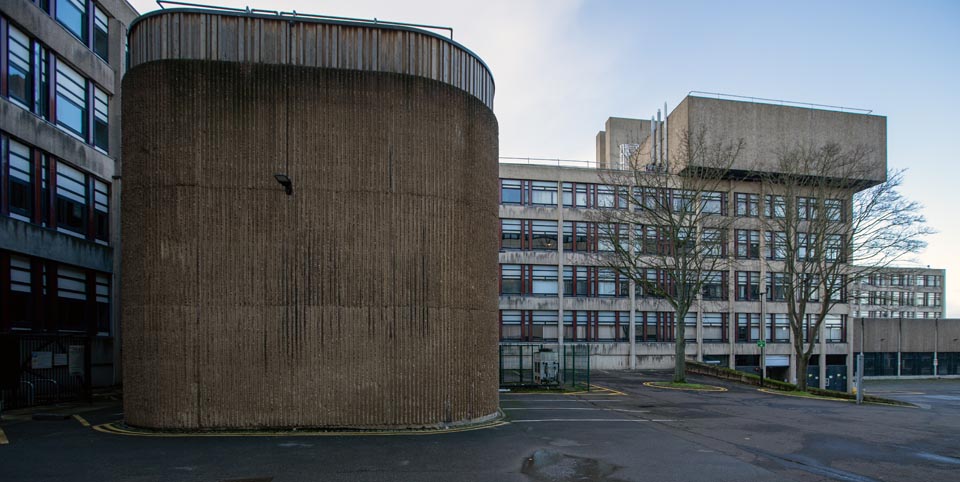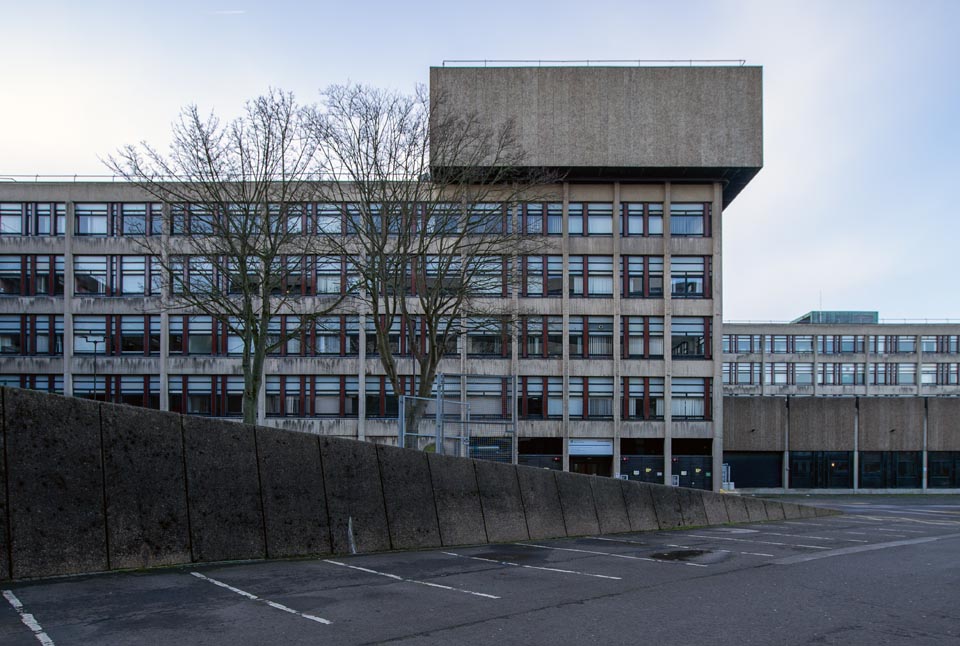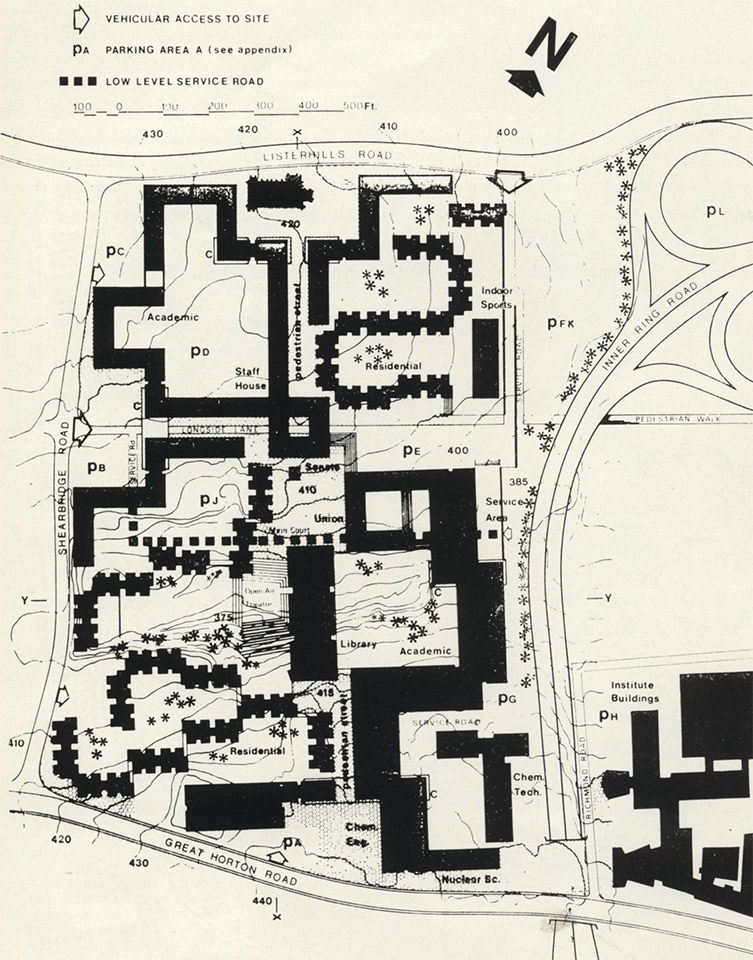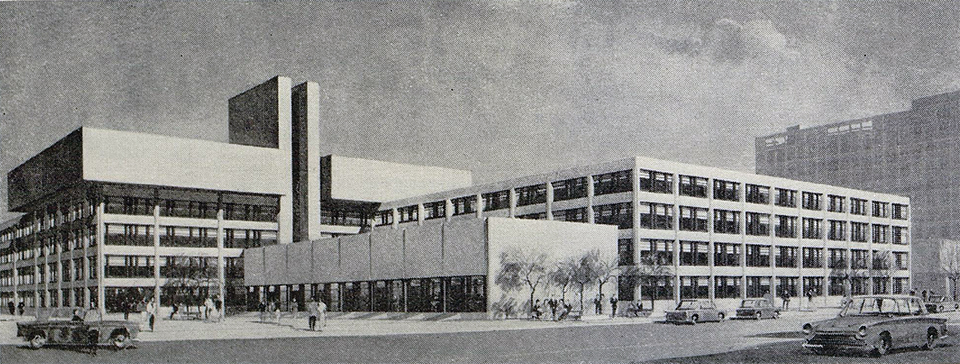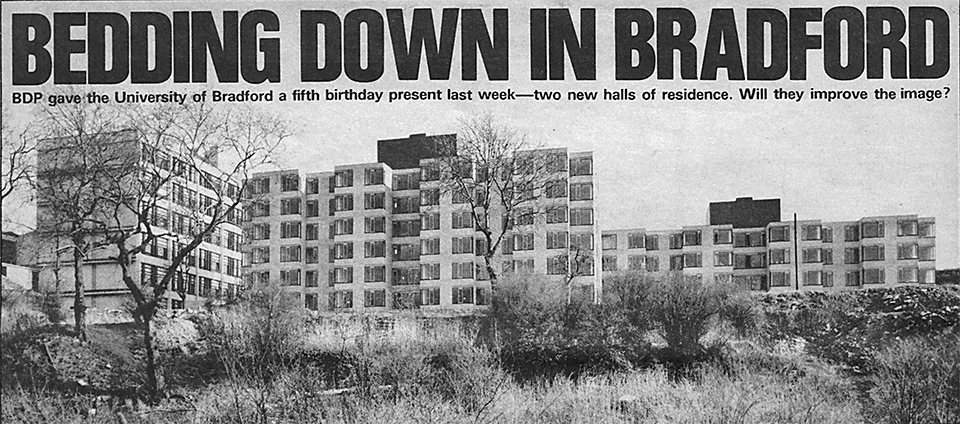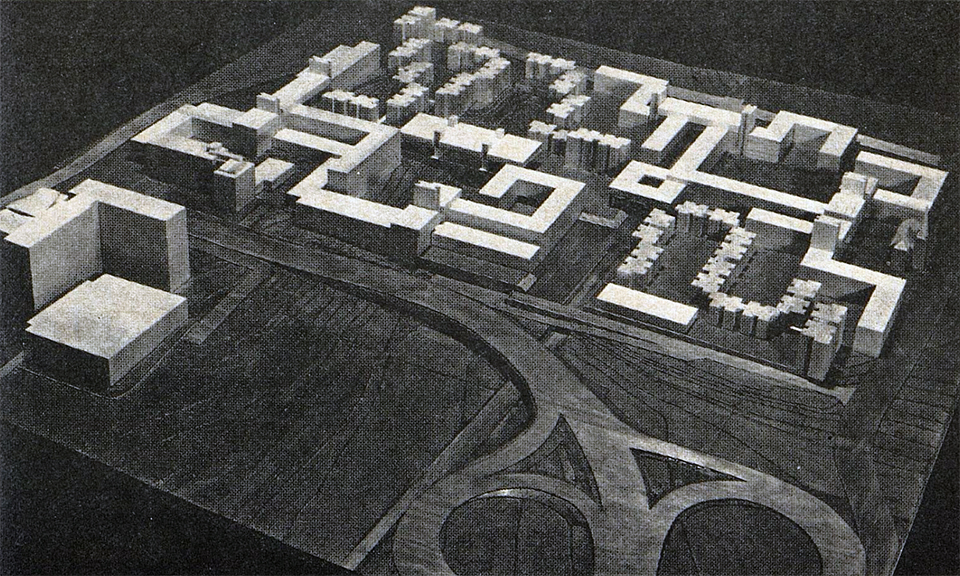University of Bradford
1969
The new University of Bradford was designed around the site of the existing Institute of Technology (W.C. Brown, City Architect, 1960) and intended to be served by a ring-road that would separate the two. Most new post-war universities were constructed on greenfield sites outside of town centres, but the Architects’ Journal and Architectural Review both reported an ‘undercurrent of dissent’ and the profession’s desire to explore urban alternatives. Building Design Partnership were said to have been ‘preoccupied with the notion of a university deeply embedded in the urban mesh’ [1] and to have tested the idea in their general planning work for the City of Chester. At Bradford, their masterplan, commissioned in 1964, for a university for 5,000 students with scope for further expansion, was set out orthogonally on a gently sloping site just to the west of the city centre. Its growth was strategically planned to connect with other established institutions – a teacher training college and St. Luke’s Hospital – mimicking arrangements in cities like Leeds. The disposition of buildings in relation to one another was predicated on the prevailing south-westerly winds and the tightly grouped, relatively low buildings designed to mitigate the worst of the inclement weather. The provision of student residences within the scheme was vital as there was already a shortfall of such in Bradford at the time. These were built as a second phase of development and completed in 1971, but have since been demolished. The earliest and most substantial phase of construction was laboratory block for chemical and nuclear engineering designed under the direction of Sid Tasker [2]. The L shaped plan connected with existing buildings to create an internal courtyard predominantly used to service the facilities. An in-situ reinforced concrete frame was finished with blasted panels with exposed aggregate. Typical of BDP’s approach, the rhythm of the structure was interrupted by infill curtain walling that used windows and spandrel panels in an irregular pattern to reduce the monotony of the facades whilst not compromising budget – a similar system is in evidence in the Ellen Wilkinson Building at the University of Manchester. The two major expressive forms of the scheme were a blank elevated box on the fifth-floor housing a large lecture theatre and seminar rooms and a curved, ribbed volume that contained ‘special’ nuclear laboratories. Whilst modified, this bock retains its integrity and the quality of the original is still in evidence.
[1] Architects’ Journal, 18 May 1966, p.1235
[2] Architectural Review, January 1967, p.48
